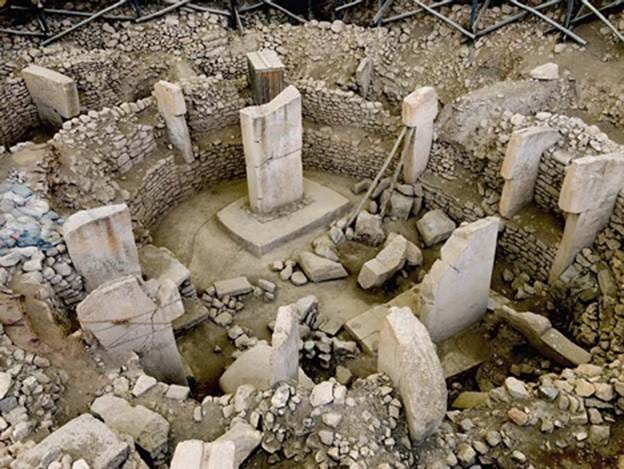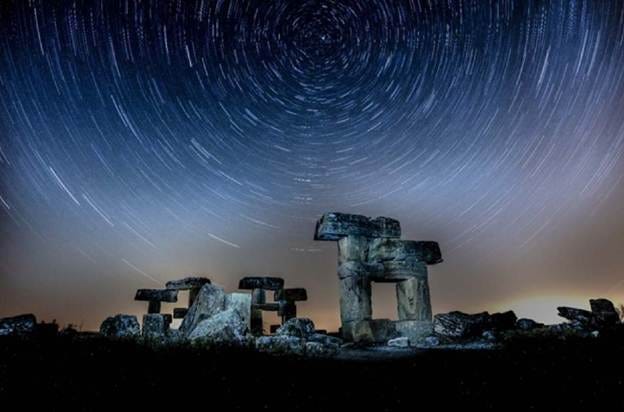Ancient Architecture, Ancient Alcohol, Ancient Religion and the End of Our World
In 1995 a German archaeologist named Klaus Schmidt decided to begin work in Turkey at a place called Potbelly Hill, or Göbekli Tepe. He didn't know at the time that he was about to turn the world of archaeology upside down and re-write the story of our civilization. When it became apparent that he was on to something completely transforming, he declared:
“In 10 or 15 years, Göbekli Tepe will be more famous than Stonehenge. And for good reason!”
He was right.

Göbekli Tepe
What he found was a huge temple complex built of immense T-shaped stone pillars arranged in sets of rings. The tallest are 18 feet (5.4 meters) high and weigh 16 tons (14,515 kilograms). Carved into their surfaces are a whole menagerie of bas-relief totemic animals of prey. Littering the nearby hillside are thousands of flint tools from Neolithic times—knives, projectile points, choppers, scrapers, and files.
When Schmidt used standard, accepted methods to date the site he amazed even himself. Göbekli Tepe was built many thousands of years before the Great Pyramid of Giza, way earlier than even the first wooden beginnings of Stonehenge, and, it was then thought, way before the invention of agriculture. How could a work force consisting of the thousands of laborers needed to construct such a project possibly be mobilized, instructed, equipped, fed, and encouraged to stay on the job when the only people thought to have lived back then were stone-age primitives?
So far, there is no indication whatsoever of extensive agriculture going on in the surrounding area until after construction began. At least at first, evidence suggests, hunting teams would fan out, kill what game they could, and bring it back to the workers. The bones of their evening meals consist mostly of aurochs and gazelles. Then, later in the project, it appeared that the birth of agriculture started here, in Turkey, rather than down south at Sumer many thousands of years later as traditional history would claim it did.
Keep reading with a 7-day free trial
Subscribe to Ancient Origins UNLEASHED to keep reading this post and get 7 days of free access to the full post archives.


